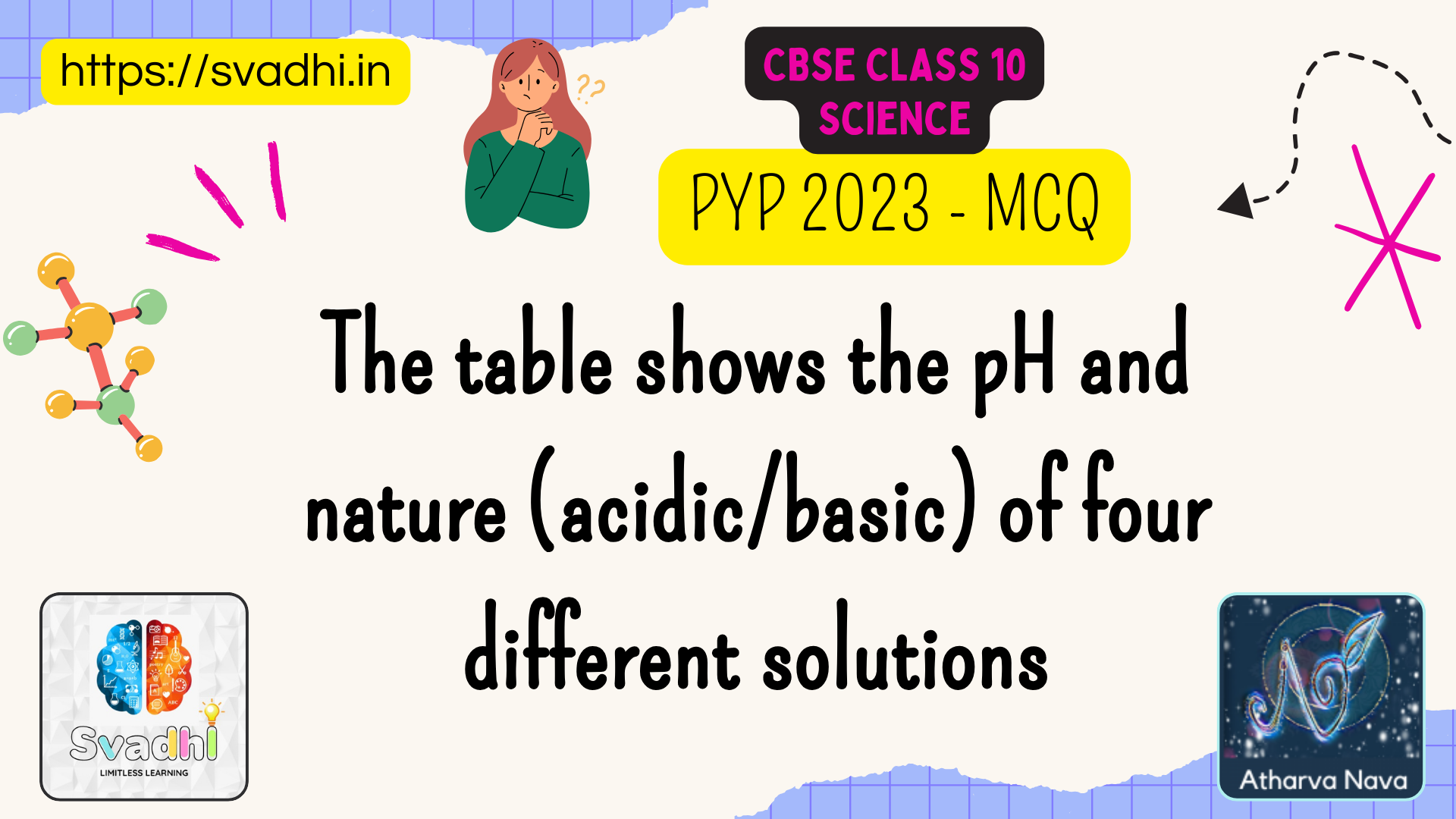Play & Listen Here
Which one of the options in the table is correct ?
| Option | Solution | Colour of pH paper | Approximate pH value | Nature of solution |
|---|---|---|---|---|
| (a) | Lemon juice | Orange | 3 | Basic |
| (b) | Milk of magnesia | Blue | 10 | Basic |
| (c) | Gastric juice | Red | 6 | Acidic |
| (d) | Pure water | Yellow | 7 | Neutral |
The table shows the pH and nature (acidic/basic) of four different solutions. The pH scale ranges from 0 to 14, with 7 being neutral. Solutions with a pH less than 7 are acidic, and solutions with a pH greater than 7 are basic.
pH Scale of some Common Chemicals:
pH Scale and nature of some Common Chemicals are shown in the figures


Option (b): Milk of magnesia has a pH of 10, which is basic. The color of the pH paper is given as blue, which is consistent with a basic solution. This option is correct.
Here’s a breakdown of why the other options are incorrect:
- Option (a): Lemon juice has a pH of 3, which is acidic. The colour of pH paper is given as orange but nature is given as basic. This option is incorrect.
- Option (c): Gastric juice has a pH of 1, which is very acidic. The color of the pH paper is given as red, but pH value of 6 is incorrect for a strong acidic solution. This option is incorrect.
- Option (d): Pure water has a pH of 7, which is neutral. The color of the pH paper is given as yellow, which should be green with a neutral solution. This option is incorrect.
Curious Question:
Define the pH of a solution.
Ans: It is a measure of the basic or acidic power of a solution. It is a scale to measure the hydrogen ion concentration in the solution. Lower the hydrogen ion concentration higher is the pH.


Leave a Reply